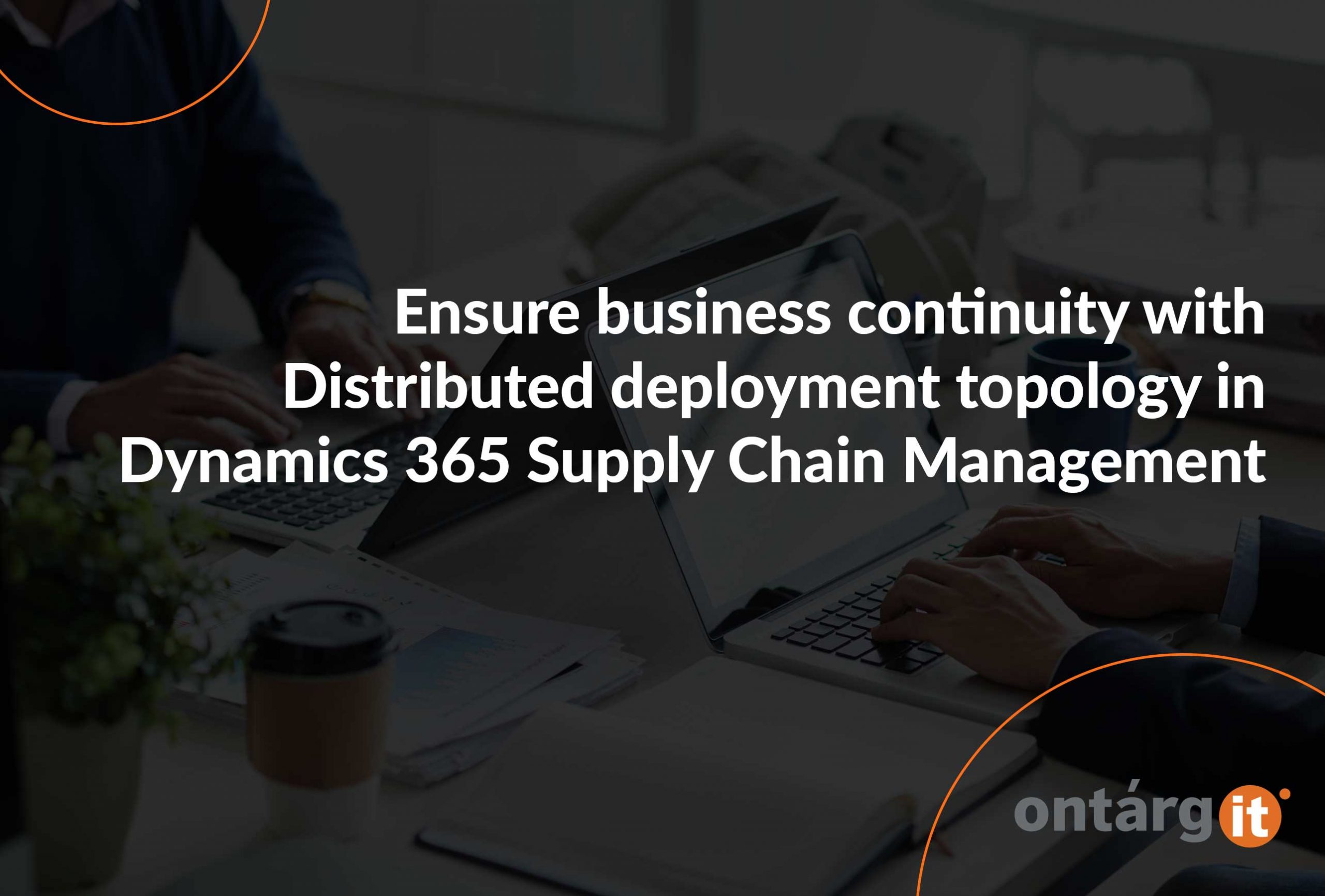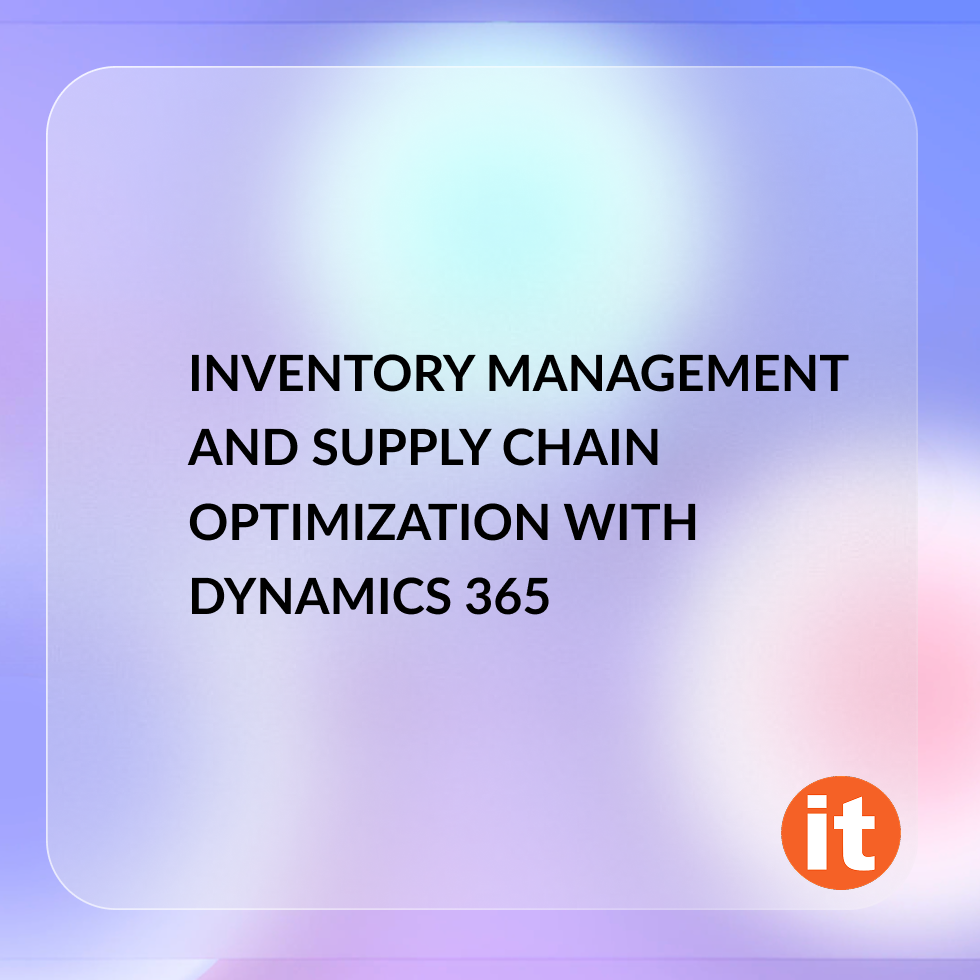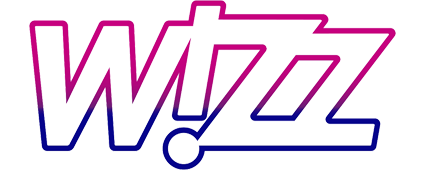To develop a successful business, you need to increase turnover of the company, explore new markets, build new warehouses and production facilities in other countries to reach the maximum number of customers. Of course, to track all business processes, you need ERP system that will work 24/7.
But whatever system you use, it works through communication over the Internet, which is a limiting factor as the transfer rate or frequent interruption in the Internet connection of the system between the end user and the server.
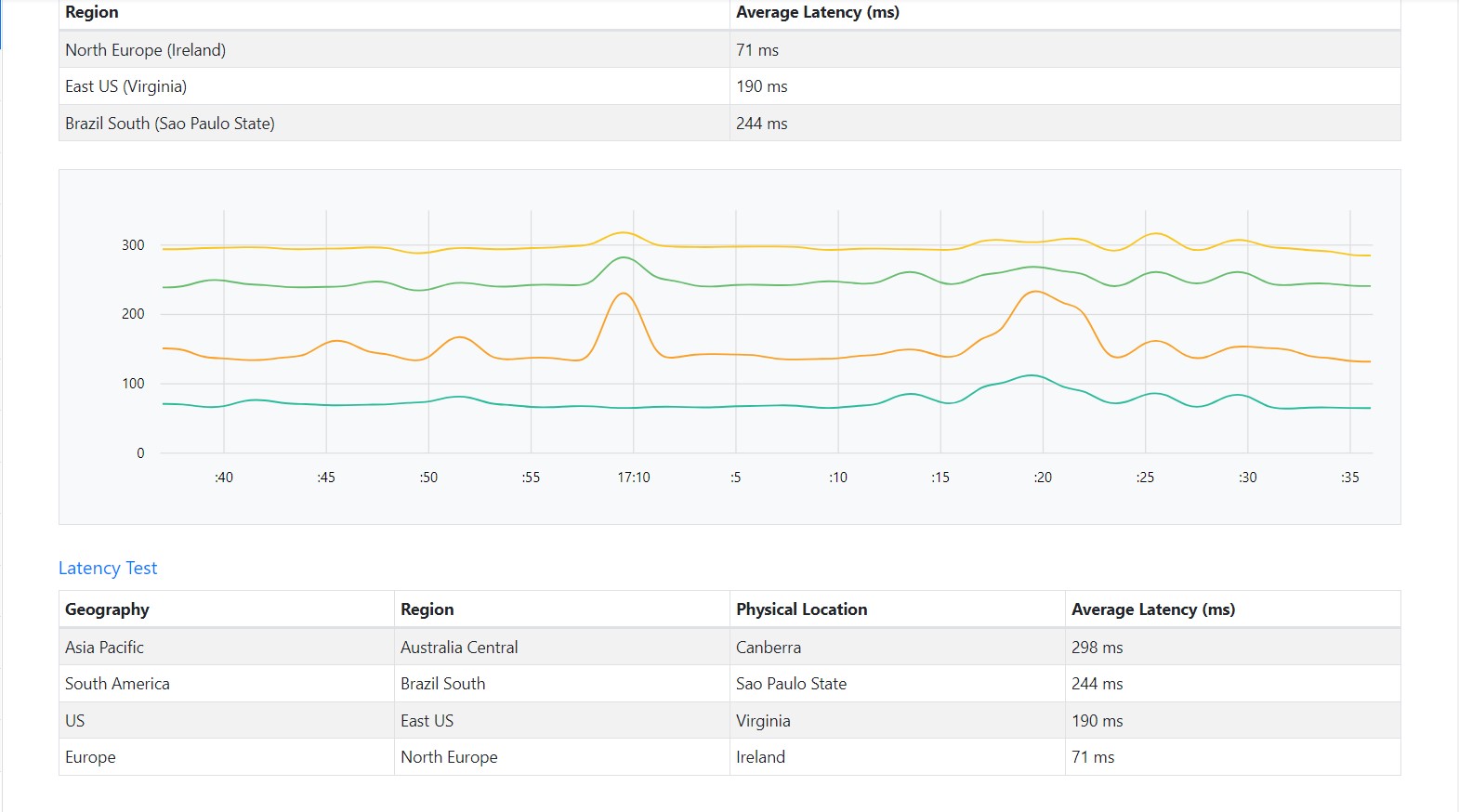
Pic. 1 – Average latency between Eastern Europe and other regions
Now let’s look at an example where the server and main office are in Australia, and the warehouse is located in Ukraine. The manager initiates a sales order to be implemented in Eastern Europe. A warehouse employee receives a task on a mobile device, for picking, the employee needs to enter information into the system about which product he took, where he took it from, which batch or serial number. In a short period of time, you need to enter and output information from the server and taking into account the delay (Pic.1) of 298 ms, it will be so looooong.
Decrease in labor productivity, since an employee or a robot (depending on the modernity of the warehouse) later receives information. Obviously, it is not acceptable for a business to correlate distance from the server or other Internet connection issues with work efficiency.
The developers of Microsoft Dynamics 365 for Finance and Operations have created a solution for this problem – Scale units in a distributed hybrid topology
The essence of this solution that data is stored on the server (Hub), which is the “head”, through which actions in the system are initiated and processed. But execution of warehouse and manufacturing work a server (Scale unit) is used, which is needed to perform narrowly set tasks at the periphery, it may be located on the other side of the planet.
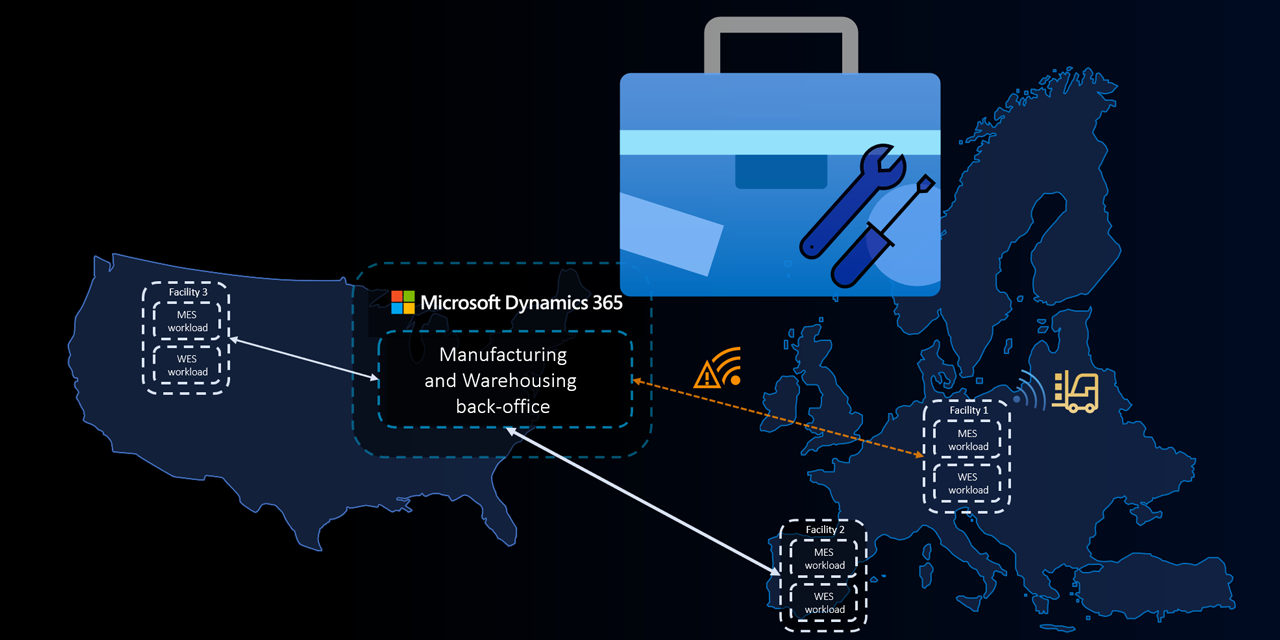
Pic. 2 – Scheme of the interaction between Hub and Scale unit
There are currently two product variations Cloud Scale Unit and Edge Scale Unit
Cloud Scale Unit
This solution is good to use in the case (pic. 2), when the main server is located on one continent and warehouses on the other. You don’t need to have a real server and maintain it. Information about the movement, receipt, shipment of goods through the warehouse is stored on a cloud server, which is located as close as possible to the warehouse. Further processing of the order, transfer of information to the office of the company and to the warehouse is carried out from Cloud Scale Unit to Hub and vice versa.
Edge scale unit
This solution is perfect in cases where a warehouse or manufactories is located outside the city and there are problems with the Internet connection. A server is placed on the territory of the warehouse, when there is an Internet connection, it receives tasks, then the employee performs them without delays in processing, and all the employee’s data is stored in the server’s memory and, if there is a connection, is transmitted from the Edge Scale Unit to the Hub.
Let’s move on and take a look at the example with Cloud Scale unit
The sales manager creates an order with the customer in Dynamics 365, reserves the required quantity of product for the order, and then release this order to the warehouse, it’s mean that system create work for warehouse worker with information what to do and where. All these actions take place on the Hub (Pic.3)
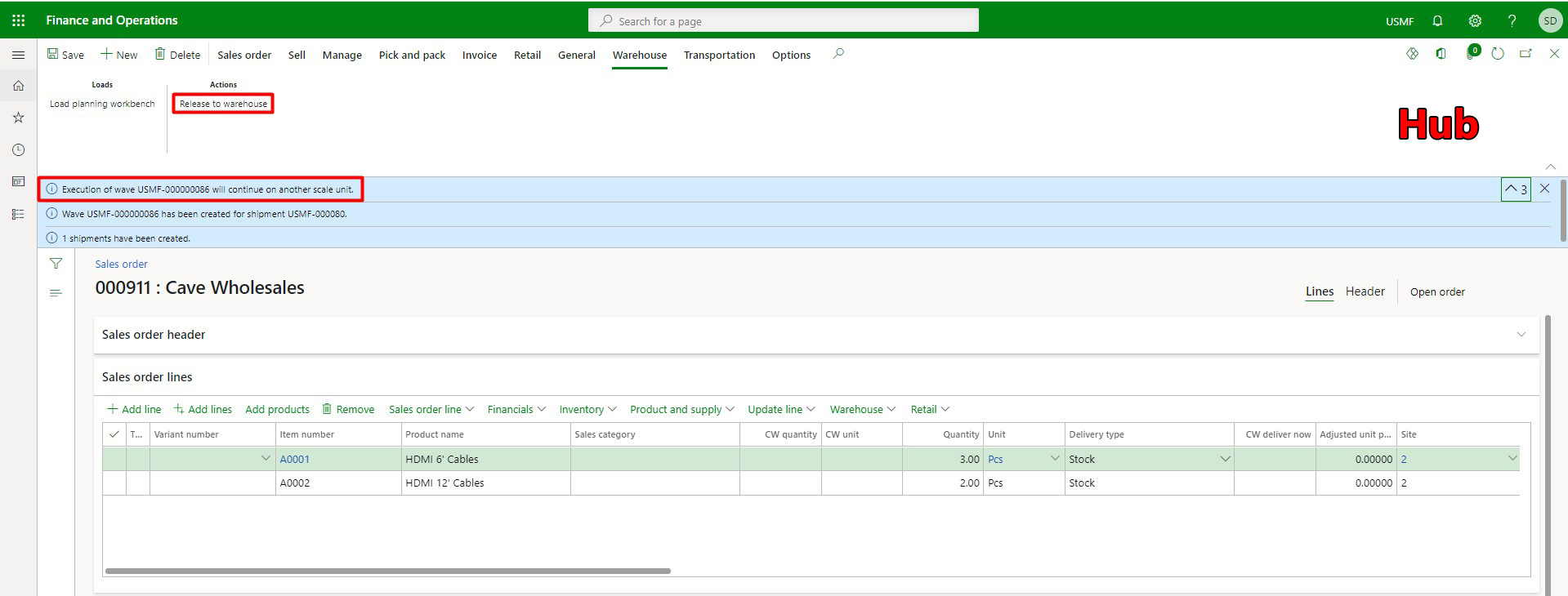
Pic. 3 – Sales manager create SO at the Hub
After that, the order and other warehouse settings are transferred to the Scale Unit (Pic. 4) automatically, data from one system migrates to another in batches continuously.

Pic. 4 – Data exchange between two environments
As soon as all the data is transferred to the Scale unit environment, a sales order is created, with the work ready for execution by the warehouse employee. (Pic.5) Work is a task that is displayed in the employee’s portable terminal, it specifies the actions that the employee must perform for a given business process: pick, put, quality check, cycle count etc. All data entered by the employee is displayed in the system. The presence of warehouse management is important for online tracking of the stock of a legal entity, current status of order fulfillment.

Pic. 5 – Creating an order and pulling up information about warehouse work for a Scale unit
The warehouse employee starts picking the order using the warehouse application on his portable terminal in this case, indicates LP from the location which he took the goods and confirms the completed quantity of the goods. Indicates that he placed this order at the Baydoor (Pic.6). All actions of the employee are saved in the environment of the Scale Unit and, if the Internet is available, are transmitted to the Hub. The employee completed the work without delay and disconnection and ready to start the next task.
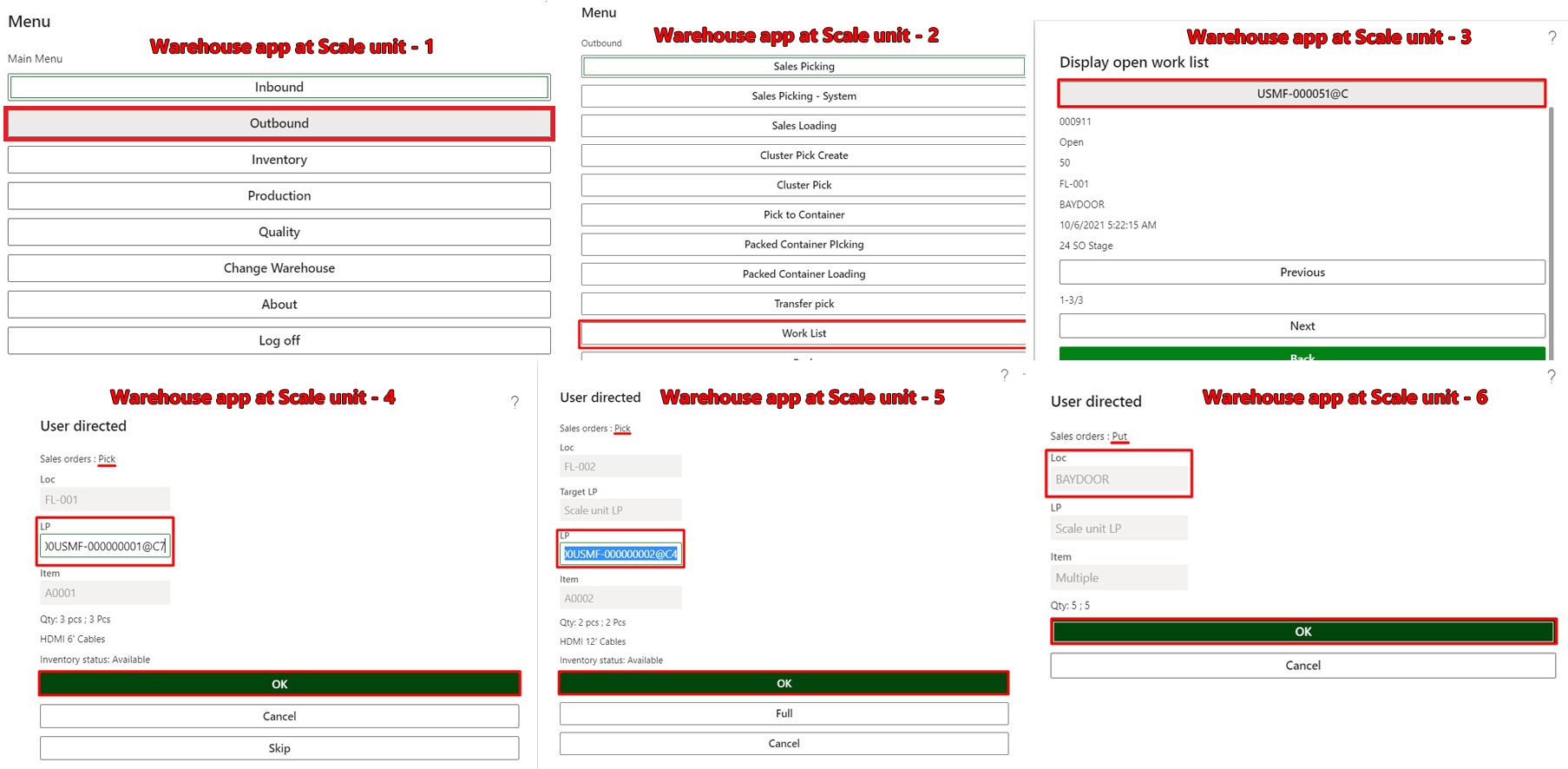
Pic. 6 – Worker picks an order using the Warehouse application
The work is completed! Work status has changed to Closed (Pic. 7).

Pic. 7 – Work completed, all goods picked and packed
Now at the Scale unit environment, we could confirm outbound shipment with the goods, post Packing slip and sending electronic ASN(Advanced Shipping Notice) or give it to the driver, which contain all information about what pallets and items in what quantity are packed in cargo. (Pic.8) The Scale unit has fully fulfilled its function and all information is transferred to the Hub.

Pic. 8 – Confirmation of order shipment and sending ASN
Conclusions
This functionality solves communicative problems which arise in real life – software speed. It will really help you make your business even more efficient, remove delays associated with data transfer rates and intermittent Internet operation. This article describes the end2end process of warehouse transactions, this technology is applicable to manufacturing. Read more about manufacturing execution in “Distributed deployment topology” in the following articles and find more information on Microsoft Docs. Our team is always glad to help you implement new and progressive technologies for your business.

